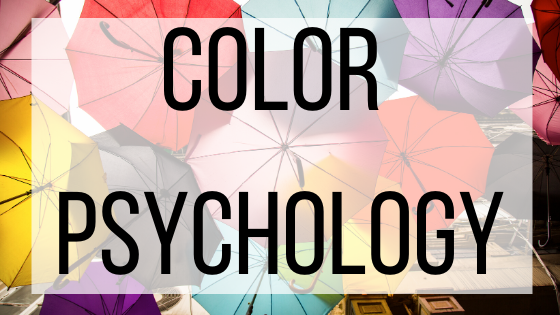Color Psychology

Creating a logo, overall brand image, Instagram grid, and most other aspects of your marketing and branding efforts are largely dictated by color. Consider some of the most eye-catching and memorable logos: McDonald’s, Coca-Cola, Starbucks, Target, etc. All of these brands are not only known for their great designs but their color choices as well. Color psychology plays a big roll in the success of your color and branding. Here’s how you can make the most out of your efforts by choosing the ideal color scheme for your brand.
What Is Color Psychology?
Color psychology studies color and how it relates to human behavior. It analyzes how our perceptions of different things are influenced by colors. ColorPsychology.org explains that the proper use of color can increase brand recognition by as much as 80%. Colors are known to stimulate the brain, and researching what colors are best for your personal brand and goals can bring major benefits and increased sales.
Using Color For Brand Recognition:
First and foremost, you want your colors to reflect on the personality of your brand. Whether or not people realize it, they base judgments off of your logo and overall design. For example, imagine if Barbie’s logo was a simple, black font (like the Barbie Signature shown on their website). Although the Barbie Signature font looks classy and official, the Barbie brand as a whole is about instilling fun, imagination, and big dreams into young girls. Their swirly pink logo is easily recognizable and reflects the brand image they are trying to project. Another brand that sets a great example is Dunkin’ Donuts. Their bright pink and orange logo reflects their fun personality and quick service. Imagine the same logo in a deep green like their competitor Starbucks– it would give off a completely different vibe and more than likely not do as well.
Colors Across Industries:
Although each individual company should choose a color scheme best suited to their needs, there are color patterns seen across industries. For example, many social media platforms choose blue as their main color. Think of Facebook, Twitter, Skype, even the old Instagram logo. Blue is typically seen as dependable and trustworthy, so it makes sense for those brands to choose a color that they want to relate to their values. Companies that choose black logos, such as Nike, Adidas, or The New York Times, usually want to be seen as sleek and professional. Red creates a sense of urgency, which is why it is commonly used in fast food logos and sported by big corporations like Target and CNN. Do some research before choosing your colors to see which color, or colors, best match the image you want to project.
How To Choose Colors:
Plan on having no more than 2 or 3 colors. Many brands choose a neutral and a color, while others like Slack re-brand to have a bright, colorful design that reflects their brand. Write down a list of brand personality traits before you get started- are you playful or serious? Modern or classic? Affordable or luxury? Once you have your personality traits listed and prioritized, research what colors best match your trait. Canva has a helpful article explaining how to choose your colors, or you can find quizzes like this one on Grasshopper to help get you started. Once you pick your main color scheme, don’t be afraid to add little pops of other colors (especially trendy ones!) to show that you are keeping up to date with trends.
Ultimately, your brand colors are your choice. Quizzes and articles can be a huge asset in helping you decide what colors best reflect your brand and personality, but you know what you want to convey better than anyone. With some thought and effort you’ll have the perfect color scheme before you know it!



2 Comments
spider solitaire · April 19, 2022 at 10:50 am
Have you considered using Buy Now, Pay Later? What do you think are the biggest pros and cons?
BMT Micro · April 19, 2022 at 11:10 am
Hi, we have a post about Buy Now, Pay Later! Check it out for the pros and cons here: https://blog.bmtmicro.com/buynowpaylater/